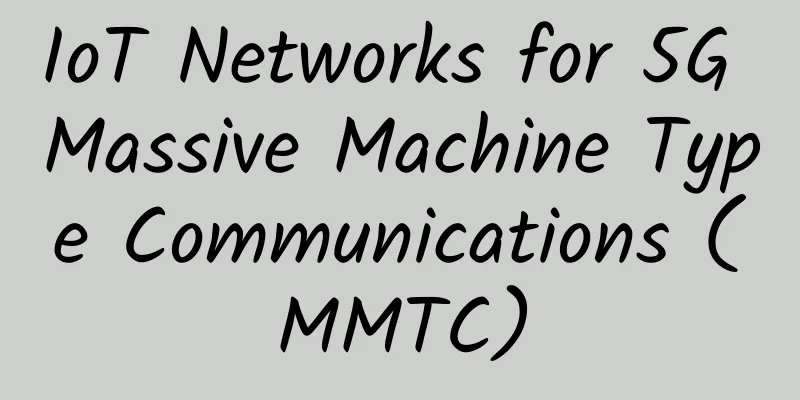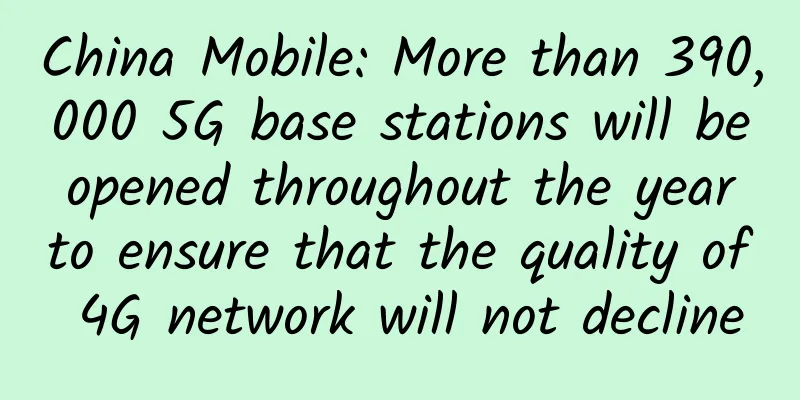IoT Networks for 5G Massive Machine Type Communications (MMTC)

|
The concept of Internet of Things (IoT) is becoming increasingly popular in the market today, paving the way for a smarter, more dynamic and connected society. The introduction of 5G technology is a catalyst for IoT, which is expected to provide ubiquitous connectivity, higher data rates, ultra-low latency and improved energy efficiency to billions of connected devices in the coming years. One of the most promising use cases of 5G IoT is massive machine type communication (mMTC), which connects a large number of low-power devices (sensors) to the network to enable a wide variety of applications. mMTC is an important part of 5G network services, which can provide low-cost, low-power and reliable connections for a large number of IoT devices. mMTC can support a connection density of up to 1 million devices per square kilometer, thus realizing large-scale IoT deployment. IoT networks require multiple advancements to enable mMTC services in 5G. Below we will discuss the key advancements and technologies that can transform IoT networks to enable multiple 5G services. 5G New Radio (5GNR): The 3rd Generation Partnership Project (3GPP) releases 15 to 18 drive 5G expansion for IoT. 3GPP releases 15 to 17 focus on a unified and scalable air interface, 5G NR, to support coexistence of a wide range of 5G device categories. Release 17 introduced 5G NR Light, bringing new features to the IoT, such as optimizing power consumption and recovering coverage through sidelink. 3GPP Releases 16 and 17 include positioning enhancements such as 3D positioning, centimeter-level accuracy, reduced positioning latency, and reliability enhancements in specific areas such as vehicle-to-everything (V2X) and factory positioning. Edge computing: Edge computing is a distributed computing paradigm that brings computing and storage closer to IoT devices or the edge of the network, reducing the amount of data that needs to be communicated over the network. This improves the quality and performance of mMTC services with low latency and greater security. Artificial Intelligence (AI): AI can be used to analyze the massive amounts of data generated by IoT devices and extract meaningful insights from them. It can also be used to optimize the performance of mMTC services by predicting device behavior, identifying anomalies, and optimizing network resources. Connectivity via Cloud SIM: To support flexible IoT deployments in the market, on-demand cellular connectivity without relying on physical SIM cards (eSIM) has become a current requirement. Cloud SIM has become the best choice, connecting IoT devices to the network on demand by securely locating SIM card functionality to the cloud. With Cloud SIM, the SIM functionality is embedded into the device's hardware and can be remotely programmed to connect to different cellular networks. Cloud SIM can be updated remotely over the air, providing greater flexibility and scalability than traditional or physical SIM cards. Cellular and non-cellular technologies: LPWAN (Low Power Wide Area Network) technologies enable long-range communication between low-power devices such as sensors to enable various IoT applications. For example, Narrowband IoT (NB-IoT) and LTE-M are examples of cellular technologies, while oRAWAN and Sigfox are non-cellular technologies that support IoT deployments. 5G IoT connections are expected to increase 1,100% by 2026, from 13 million in 2023 to 110 million in 2026. Technology is evolving faster than ever before, and 5G networks are being designed to do everything from quickly deploying customized IoT services to meeting the needs of multiple vertical industries, including healthcare and manufacturing. To handle this massive connection, the IoT network that connects the devices must be completely transformed. To promote the development of IoT, the combination of various emerging technologies such as artificial intelligence, analytics, edge computing, etc. is essential to ensure secure, reliable and scalable mMTC services in 5G. |
<<: The emergence of Wi-Fi HaLow promotes IoT applications and innovation
>>: Internet chat, what have you learned?
Recommend
Linux will support new network technology based on Li-Fi
According to phoronix, Li-Fi technology supplier ...
Meta and Microsoft integrate Workplace and Teams to provide new features
[[436945]] Microsoft Teams users can now access a...
LOCVPS: 40% off KVM in Los Angeles/30% off KVM in Australia/20% off all sites, multiple computer rooms available
LOCVPS (Global Cloud) is an early established Chi...
Exploration of CDN Technology Innovation and Business Model——2018 Asia Pacific CDN Summit was grandly held
[51CTO.com original article] On April 11-12, 2018...
The United States lost 5G simply because it made the wrong choice at the beginning
In 2019, Ren Zhengfei said that the United States...
The live streaming of selling goods is so smooth, it turns out that this technical system is supporting it!
1. Introduction Hi, everyone. I am your Xiaomi. T...
Operators' first-half report card released: 5G user scale reaches nearly 500 million, competing for 5G applications in the second half
Recently, the operating data of the three major o...
Daily Bug Troubleshooting-All Connections Suddenly Closed
Preface The daily bug troubleshooting series is a...
What can I do with 5G network?
Some people say that 4G is enough and there is no...
In 2021, the development of 6G in various countries will accelerate, and the deployment of network satellites will become the focus.
Although 5G has only just become a reality, techn...
5G application complex network security issues cannot be ignored
The commercial use of 5G has brought unlimited po...
Are you a left-brained or right-brained person? (Test included)
【51CTO.com Quick Translation】 The success of a co...
5G brings precise positioning to the Internet of Things
Cellular has ‘all the ingredients’ to enhance pre...
Cisco's Wei Songbin: Cisco makes people's work and life smarter, simpler, safer and more convenient
[51CTO.com original article] Reporters have atten...
A big comparison of 5G packages among the three major operators: China Telecom is the most cost-effective, but I still don’t recommend it
5G has been commercialized for a long time, and m...









